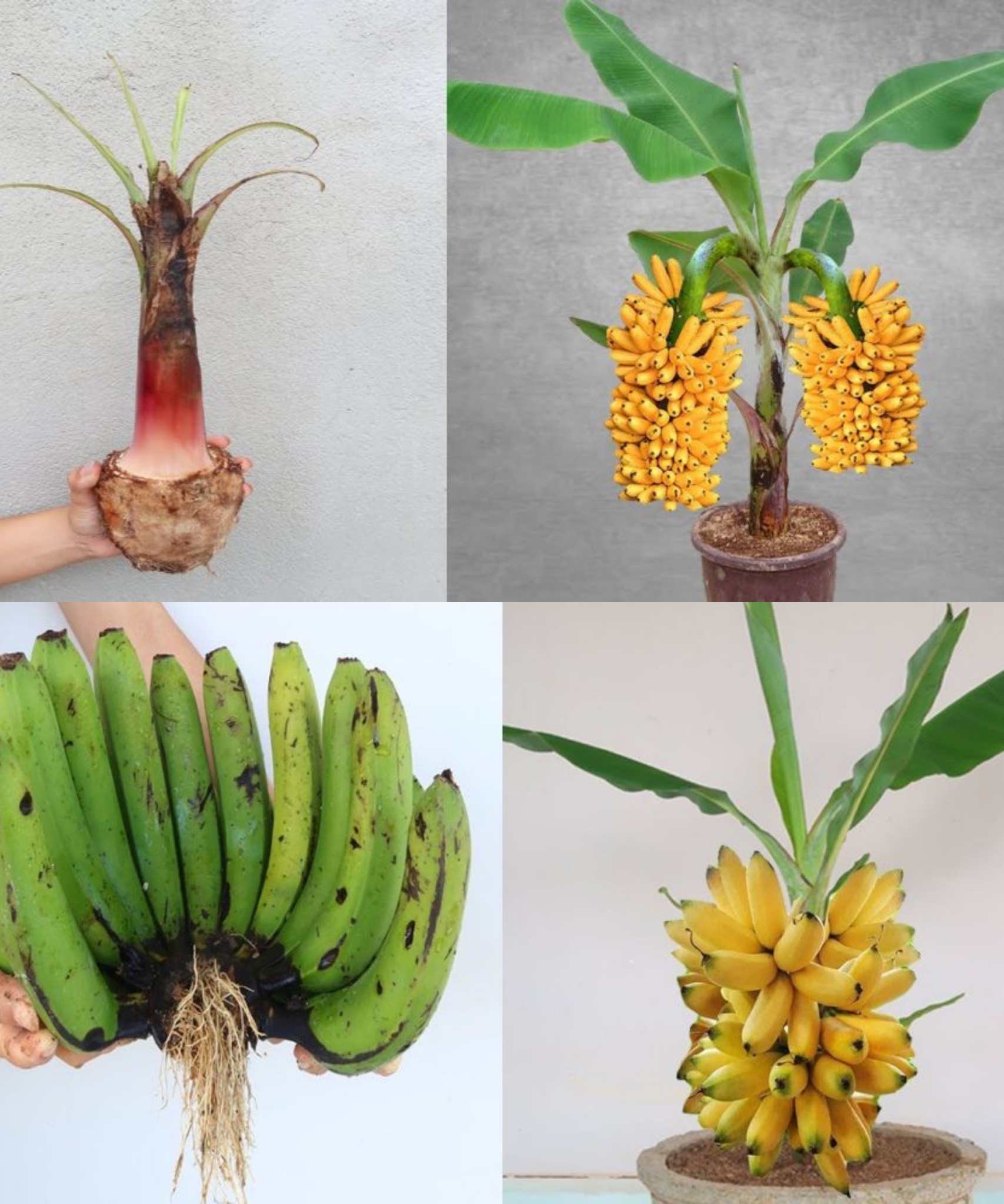
Simple tips to grow bananas at home for a lot of fruit🌱
Growing bananas at home can be a rewarding experience, and while it might be more challenging in certain climates, it’s certainly possible with some care. Here are simple tips to help you grow bananas for a bountiful harvest:
Choose the Right Banana Variety: Select a banana variety that is well-suited to your climate. Some varieties are more cold-tolerant, while others thrive in warmer conditions. Common varieties include Cavendish, Dwarf Cavendish, and Lady Finger.
Planting Location: Bananas prefer full sun and well-draining soil. Choose a location that receives at least 10 hours of sunlight per day. Ensure that the soil drains well to prevent waterlogging.
Soil Preparation: Bananas prefer fertile, organic-rich soil. Amend the soil with well-rotted compost or manure before planting.
Spacing: Plant banana plants at least 6 to 8 feet apart. This allows the plants to spread and provides adequate space for growth.
Watering: Bananas need consistent moisture, especially during dry periods. Water deeply and regularly, aiming for about 1 to 1.5 inches of water per week. However, avoid waterlogged conditions.
Mulching: Apply a thick layer of mulch around the base of the banana plants to help retain soil moisture, suppress weeds, and provide nutrients as the mulch breaks down.
Fertilization: Bananas are heavy feeders. Fertilize regularly with a balanced fertilizer, particularly during the growing season. Use a fertilizer high in potassium to promote fruit development.
Support: As banana plants grow, they may need support to prevent them from toppling over. Use stakes or tie the plants to a support structure.
Protect from Wind: Bananas have large, broad leaves that can be damaged by strong winds. Plant them in a location protected from strong gusts or provide a windbreak.
Harvesting: Be patient; it can take several months for bananas to mature. Harvest bananas when they are fully grown, plump, and have turned from green to yellow. Cut the bunch using a sharp knife.
Pest Control: Keep an eye out for pests, such as aphids or spider mites. Regularly inspect the undersides of leaves. If pests are present, treat them with insecticidal soap or neem oil.
Disease Management: Practice good garden hygiene to prevent the spread of diseases. Remove and dispose of any infected leaves promptly.
Propagation: Bananas produce pups or suckers that can be separated and replanted to grow new banana plants. This is a natural way to increase your banana yield.
Winter Protection (for Cold Climates): In colder climates, consider mulching around the base of the plant and wrapping the trunk in burlap or other insulation to protect against frost.
Remember that growing bananas might be more successful in tropical or subtropical climates, but with the right care, you can still enjoy homegrown bananas in some temperate regions. Adjust these tips based on your specific climate and banana variety.
